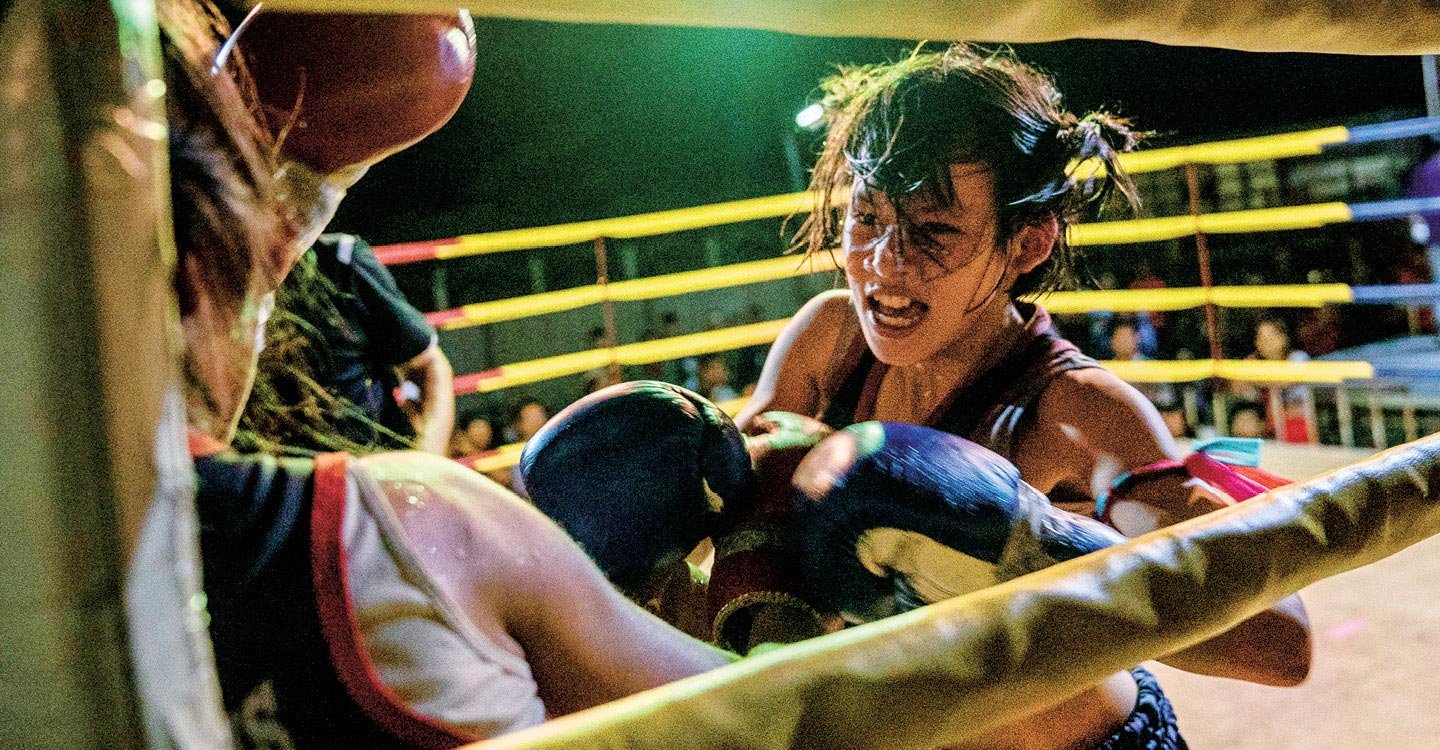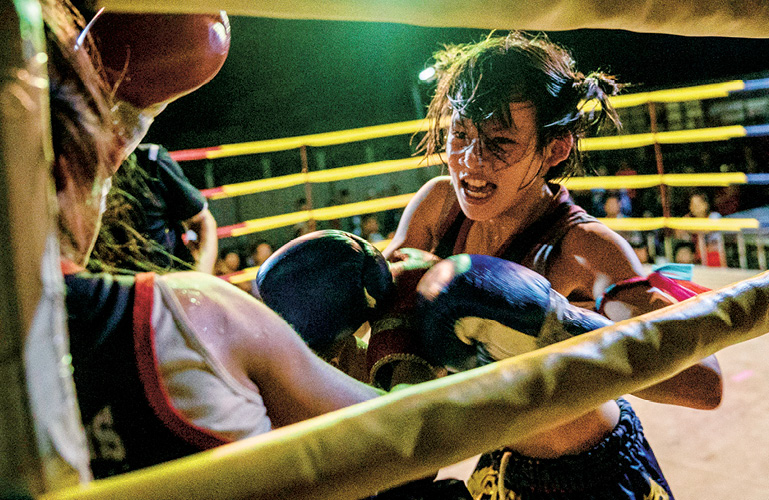Sprawled on a bamboo mat, Supattra Inthirat closed her eyes as her father massaged her hard arms with oil and menthol. In preparation for her 15th muay Thai bout, her father whispered a prayer into her ear.
When Supattra, a 12-year-old fighter known as Pancake, faced her rival and 400 fans under halogen lights in northeastern Thailand, she would be fighting for a purpose: $60, almost half a month’s salary for Thai families in this region.
“She will be a champion,” her father said. “She must train early to build up her boxing bones.”
Across Thailand, muay Thai (moy tie) is a hallowed style of kickboxing fostered by both rich and poor. For the poor, it can be a form of social mobility, a means for muscled young boxers to fight their families’ way into the burgeoning middle class (see “Thailand’s Economy,” below). For the rich, it’s a brutal gambling form in which tens of thousands of dollars can be won and lost each night.
Lying across a bamboo mat, Supattra Inthirat closed her eyes as her father massaged her hard arms with oil and menthol. In preparation for her 15th muay Thai bout, her father whispered a prayer into her ear.
Supattra, known as Pancake, is a 12-year-old fighter. She was about to face her rival and 400 fans under halogen lights in northeastern Thailand. She would be fighting for a purpose: $60, almost half a month’s salary for Thai families in this region.
“She will be a champion,” her father said. “She must train early to build up her boxing bones.”
Across Thailand, muay Thai (moy tie) is a revered style of kickboxing fostered by both rich and poor. For the poor, it can be a form of social mobility. It’s a means for muscled young boxers to fight their families’ way into the budding middle class (see “Thailand’s Economy,” below). For the rich, it’s a brutal gambling form in which tens of thousands of dollars can be won and lost each night.



